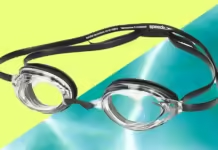Understanding the Importance of Anti-Fog Treatments for Swim Goggles
Swimming is a popular sport and recreational activity enjoyed by people of all ages. Whether you are a competitive swimmer or someone who simply loves to take a dip in the pool, having clear vision while underwater is essential for safety and performance. Foggy swim goggles can not only hinder your visibility but also be quite frustrating. This is where anti-fog treatments come into play.
How Anti-Fog Treatments Work
Anti-fog treatments are designed to prevent the build-up of condensation on the inside surface of swim goggles. When you swim, your body generates heat, and combined with the cooler temperature of the water, this can lead to fogging inside the goggles. Anti-fog treatments work by creating a thin film on the lens that reduces surface tension, preventing water droplets from forming and causing fogging.
There are various types of anti-fog treatments available, including sprays, wipes, and gels. Some goggles also come with built-in anti-fog coatings. Understanding the different options can help you choose the most suitable treatment for your needs.
Types of Anti-Fog Treatments
1. Anti-Fog Sprays: These are convenient and easy to apply. Simply spray the solution onto the lenses, and after a quick rinse, your goggles are ready to use. Anti-fog sprays are known for their long-lasting effects and are a popular choice among swimmers.
2. Anti-Fog Wipes: These are pre-moistened wipes that can be used to clean and treat the lenses. They are disposable and handy for quick applications. Many swimmers prefer wipes for their portability and ease of use.
3. Anti-Fog Gels: Gels are applied directly to the lenses and are typically left to dry before rinsing. They are known for their effectiveness in preventing fogging and are a good option for those who prefer a more controlled application.
4. Built-In Anti-Fog Coatings: Some swim goggles come with anti-fog coatings already applied to the lenses. While these coatings can be effective, they may wear off over time with regular use and require reapplication using other treatments.
Tips for Applying Anti-Fog Treatments
Regardless of the type of anti-fog treatment you choose, proper application is key to ensuring its effectiveness. Here are some tips for applying anti-fog treatments to your swim goggles:
1. Clean the Lenses: Before applying the anti-fog treatment, make sure the lenses are clean and free from any debris or residue. This will allow the treatment to adhere properly to the surface of the lenses.
2. Follow the Instructions: Different anti-fog treatments have varying application methods. It’s important to carefully read and follow the instructions provided by the manufacturer to ensure the best results.
3. Allow Sufficient Drying Time: If you are using gels or coatings, make sure to allow sufficient time for the treatment to dry before rinsing. Rushing the process can affect its longevity and effectiveness.
4. Rinse Thoroughly: After applying the treatment, be sure to rinse the goggles thoroughly with clean water. This will remove any excess residue and prepare the goggles for use.
Benefits of Using Anti-Fog Treatments
Using anti-fog treatments for your swim goggles offers several benefits:
1. Clear Vision: The primary benefit of anti-fog treatments is, of course, maintaining clear vision while swimming. This is crucial for safety and performance, whether you are swimming laps in the pool or competing in a race.
2. Enhanced Comfort: Foggy goggles can be uncomfortable and distracting. Anti-fog treatments ensure that you can focus on your swimming without the annoyance of constantly having to clear your goggles.
3. Longevity of Goggles: By preventing fogging, anti-fog treatments can help prolong the life of your swim goggles. Constant wiping and cleaning to remove fog can lead to wear and tear, which can be avoided with the use of anti-fog treatments.
4. Cost-Effective Solution: Investing in anti-fog treatments is a cost-effective way to maintain the clarity and functionality of your swim goggles. It eliminates the need to frequently replace foggy goggles and allows you to make the most of your existing gear.
Additional Tips for Preventing Fogging
In addition to using anti-fog treatments, there are some additional tips that can help prevent fogging in your swim goggles:
1. Proper Storage: Store your swim goggles in a protective case when not in use. This helps prevent dust and debris from settling on the lenses, which can contribute to fogging.
2. Avoid Touching the Inside of the Lenses: Touching the inside of the lenses with your fingers can transfer oils and dirt, which can promote fogging. Handle the goggles by the frame or use a lens cloth for cleaning.
3. Rinse with Fresh Water: After swimming in the pool, rinse your goggles with fresh water to remove chlorine or salt residue. This can help prevent chemical build-up that can contribute to fogging.
4. Use Defogging Techniques: In addition to anti-fog treatments, there are defogging techniques such as spitting in the goggles and rubbing the saliva around the lenses before rinsing, which can provide temporary relief from fogging.
Conclusion
Clear vision is essential for an enjoyable and safe swimming experience. Anti-fog treatments for swim goggles offer a practical solution to the common issue of fogging, allowing swimmers to maintain clear visibility and focus on their performance. By understanding the different types of treatments available, proper application methods, and additional preventive measures, swimmers can ensure that their goggles remain fog-free, enhancing their overall swimming experience.



















